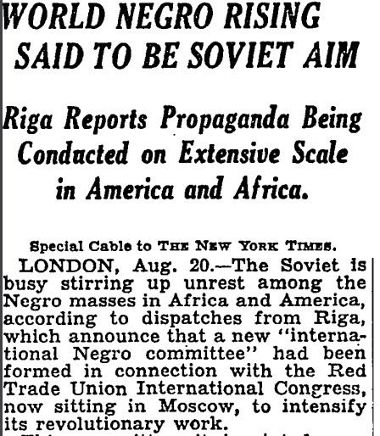By Mooon Of Alabama
December 18, 2018 "Information Clearing House" - U.S. media is again making a big fuzz about the alleged 'Russian' attempts to 'influence' the presidential elections in 2016.
In March the U.S. Senate Intelligence Committee commissioned two reports about the alleged 'Russian influence' via social media. Those reports (1, 2) were released yesterday but not endorsed by the committee.
Both reports rely on data that Facebook, Google and Twitter gave to the intelligence committee. The data contained tweets, Facebook posts, videos and how many likes, shares or retweets they received. These are from accounts which for some reason are believed to be related to the Internet Research Agency (IRA) in St. Petersburg. Most of these activities occurred after the 2016 election.
Both reports look at the usage data and the content themes the IRA run pages provided. Both claim that the intent of the IRA was to influence the election and to sow discord within the U.S. population. But there is no, none, nada, zero evidence in the data that the IRA had such an intent. Nor is their any testimony or statement on it.
In contrast the Muller investigation, which looked into the case, found evidence that the IRA had a commercial intent. Unfortunately this is mentioned neither in the two reports, nor in the current news about them. The only really known motive the IRA had when it created those accounts and filled them with content is simply ignored.
|
Are You Tired Of The Lies And Non-Stop Propaganda? |
We showed in The "Russian Ads" On Facebook Are Just Another Click-Bait Scheme that the IRA people simply created pages on Facebook and elsewhere to attract as many 'eyeballs' as possible. This so called 'click bait' was used to lead people to webpages on which the IRA sold advertisement space.
This was confirmed when the Muller investigation indicted the IRA as described in Mueller Indictment - The "Russian Influence" Is A Commercial Marketing Scheme. Point 95 of the indictment says in relation to wire fraud accusations:
Defendants and their co-conspirators also used the accounts to receive money from real U.S. persons in exchange for posting promotions and advertisements on the ORGANIZATION-controlled social media pages. Defendants and their co-conspirators typically charged certain U.S. merchants and U.S. social media sites between 25 and 50 U.S. dollars per post for promotional content on their popular false U.S. persona accounts, including Being Patriotic, Defend the 2nd, and Blacktivist.
The IRA wanted to make money.
It therefore naturally concentrated on content themes that took the least effort to create while attracting a maximum numbers of 'eyeballs' which could then be sold to advertisers. That is why some of its pages were about cute puppies. Cute puppies always sell. Using the news value of the election the IRA created pages that were pro-Trump and pages that were anti-Trump. Themes that did not attract enough eye-balls were discarded, those which did well were further promoted. This maximized the numbers of potential eyeballs and thus its advertisement income.
The reports say that a relatively high share of the IRA pages were about issues that interested African Americans.
The New York Times thus headlines: Russian 2016 Influence Operation Targeted African-Americans on Social Media:
[One] report gives particular attention to the Russians’ focus on African-Americans, which is evident to anyone who examines collections of their memes and messages.“The most prolific I.R.A. efforts on Facebook and Instagram specifically targeted black American communities and appear to have been focused on developing black audiences and recruiting black Americans as assets,” the report says.
...
The Internet Research Agency also created a dozen websites disguised as African-American in origin, with names like blackmattersus.com, blacktivist.info, blacktolive.org and blacksoul.us. On YouTube, the largest share of Russian material covered the Black Lives Matter movement and police brutality, with channels called “Don’t Shoot” and “BlackToLive.”
...
The report does not seek to explain the heavy focus on African-Americans. But the Internet Research Agency’s tactics echo Soviet propaganda efforts from decades ago that often highlighted racism and racial conflict in the United States, as well as recent Russian influence operations in other countries that sought to stir ethnic strife.
"The commies are coming to steal our slaves!" The New York Times could just have reprinted this page 3 story from 1930:

bigger
There is of course no evidence that the IRA had any special intention in catering to a black audience except for making money. The Muller indictment even highlights the IRA created site 'Blacktivist' as one of its advertisement assets. Attracting people from marginal groups, who are not well served by mainstream media, is obviously easier than to market to a mainstream audience which already gets flooded with news relevant to it. Moreover, creating Youtube channel with publicly available videos of police attacks on black citizens takes little effort while potentially attracting a significant audience.
Both reports published yesterday fail to investigate the content and available date with regard to its commercial value. Both fail to look into it under the aspect of the only documented motive the Internet Research Agency had.
These reports are thus just extensions of the sorry excuse the Hillary Clinton campaign made up after she lost the election: "Blame the Russians!"
This article was originally published by "Moon Of Alabama"-
Do you agree or disagree? Post your comment here
==See Also==
Note To ICH Community
We ask that you assist us in dissemination of the article published by ICH to your social media accounts and post links to the article from other websites.
Thank you for your support.
The views expressed in this article are solely those of the author and do not necessarily reflect the opinions of Information Clearing House.

